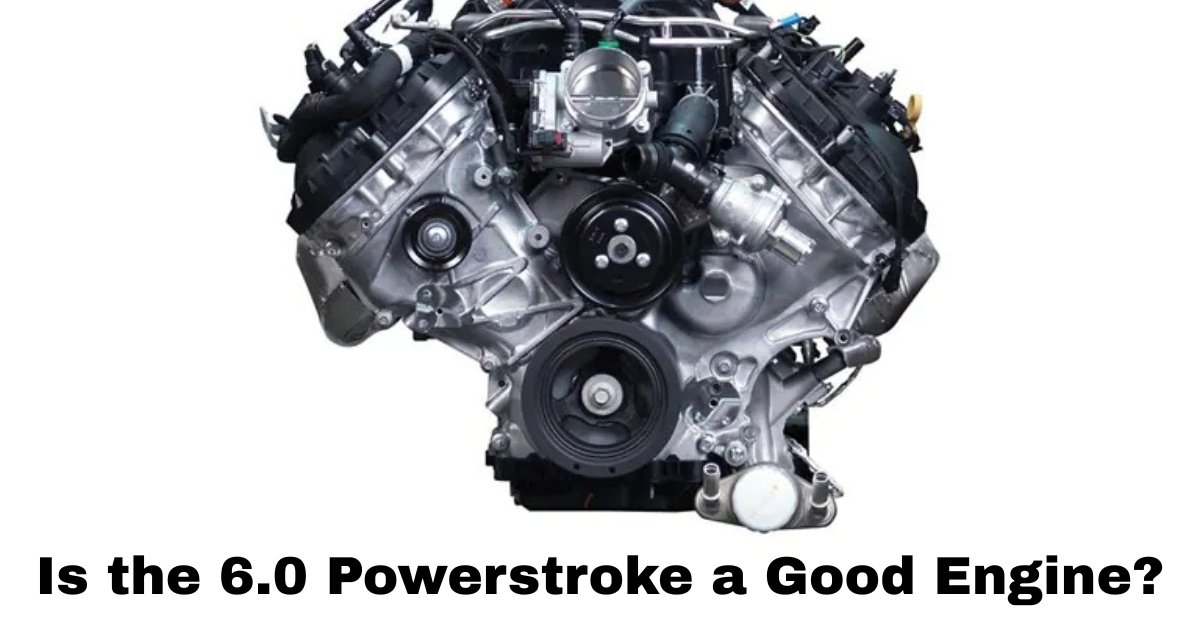If you’ve spent any time around diesel trucks, you’ve probably heard of the infamous 6.0 Powerstroke. Built by Navistar International and used in Ford Super Duty trucks between 2003 and 2007, the 6.0L Powerstroke replaced the well-loved 7.3L Powerstroke. Over the years, it has developed a reputation that sparks heated debates among diesel enthusiasts. Some call it one of the worst diesels Ford ever put in a truck, while others swear that, with the right modifications, it can be a powerhouse.
So, the big question remains: Is the 6.0 Powerstroke a good engine? The answer isn’t a simple yes or no—it depends on what you expect from it, how it’s maintained, and what upgrades have been done.
Is the 6.0 Powerstroke a Good Engine?
The Strengths of the 6.0 Powerstroke
Let’s start on a positive note. The 6.0 Powerstroke wasn’t all bad. In fact, when it first hit the market, it had several impressive features for its time:
- Power Output – The 6.0L offered 325 horsepower and 560 lb-ft of torque, which was a noticeable jump from the outgoing 7.3L Powerstroke. This made it more capable for towing and hauling heavy loads.
- Size and Responsiveness – With a variable geometry turbocharger (VGT), the 6.0 delivered better throttle response and improved drivability compared to older diesels.
- Aftermarket Support – Today, there’s a huge aftermarket community for the 6.0 Powerstroke. This means if you’re willing to invest in upgrades and preventative work, you can build a very reliable and powerful truck.
- Strong Base Engine – The block, rotating assembly, and bottom end of the 6.0 are actually quite stout. When maintained and paired with the right supporting upgrades, the engine can hold up to serious power levels.
The Weaknesses of the 6.0 Powerstroke
Unfortunately, the 6.0 Powerstroke is better known for its flaws than its strengths. Many of these issues stemmed from emissions requirements at the time and design choices that just didn’t pan out long-term.
- Head Gasket Failures – Probably the most notorious problem. The 6.0 used torque-to-yield head bolts that were prone to stretching, especially under heavy loads or increased boost. This led to blown head gaskets—a repair that could easily run into thousands of dollars.
- EGR Cooler and Oil Cooler Issues – The exhaust gas recirculation (EGR) cooler was prone to failure, often due to a clogged oil cooler. When the EGR cooler cracked, it could leak coolant into the intake system, causing white smoke, overheating, or worse—engine damage.
- High-Pressure Oil System Problems – The 6.0 relies on a high-pressure oil system to actuate the injectors. Failures in components like the high-pressure oil pump (HPOP), IPR valve, or STC fitting were common and could leave you stranded.
- Injectors – The 6.0’s fuel injectors are delicate, susceptible to fuel quality, and prone to malfunctioning if proper maintenance isn’t performed.

Can a 6.0 Powerstroke Be Made Reliable?
Here’s where opinions start to split. On one hand, if you buy a 6.0 Powerstroke and expect to run it stock, with no upgrades and questionable maintenance, you’ll likely face many of the common problems. On the other hand, if you’re willing to “bulletproof” the engine, it can be transformed into a dependable workhorse.
The term “bulletproofing” the 6.0 refers to addressing its major weak points:
- Upgrading the head bolts to stronger head studs.
- Replacing or upgrading the EGR cooler, or deleting it (where legal).
- Installing a more reliable oil cooler.
- Keeping up with regular maintenance and high-quality fluids.
Trucks that have had these upgrades done are generally far more reliable and can last well over 300,000 miles.
Should You Buy a Truck With a 6.0 Powerstroke?
If you’re shopping for a used diesel truck, you’ll often find that 6.0-equipped F-250s and F-350s are more affordable than those with the older 7.3 or the newer 6.7 Powerstroke. That’s because the reputation of the 6.0 has driven prices down.
Both advantages and disadvantages may result from this. If you find a 6.0 that has already been bulletproofed and well cared for, you could get a solid, powerful truck for a great price. However, if the truck hasn’t had the major problem areas addressed, you might be inheriting a money pit.
Final Verdict
So, is the 6.0 Powerstroke a good engine? The honest answer: It depends.
- Bad Reputation: Stock and poorly maintained 6.0s are infamous for problems that can lead to expensive repairs.
- Good Potential: The 6.0 may be dependable, strong, and long-lasting with the correct maintenance and improvements.
If you’re mechanically inclined or don’t mind investing some money into preventative upgrades, the 6.0 Powerstroke can actually be a great choice. But if you want a worry-free diesel with minimal issues, you may want to look elsewhere.
In short: the 6.0 Powerstroke is not inherently a “bad” engine—but it is an engine that demands attention, maintenance, and upgrades to truly shine.
